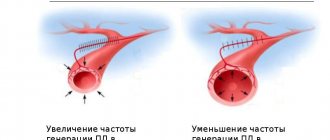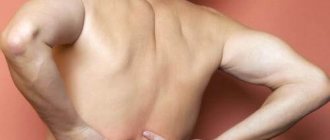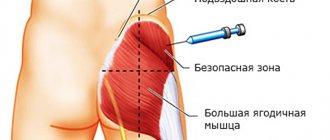Causes of sweating during VSD
This condition is caused by a disruption in the functioning of important parts of the nervous system that ensure the functionality of internal organs.
The autonomic nervous system (ANS) performs the following functions:
- sympathetic, speeding up the heart rate and constricting blood vessels;
- parasympathetic, in which contractions of the heart muscle become less frequent and the blood vessels dilate.
Signs of dysfunction of the ANS.
If we consider the role of the vegetative departments in more detail, we can see that they:
- “Responsible” for the body’s reaction to environmental changes and its rapid adaptation to new conditions - for example, to psycho-emotional stress or a sharp change in climate zone.
- Maintain the internal environment of the body at a normal, stable level. This refers to such parameters as body temperature, respiratory and heart rate, and metabolic rate.
Dystonia disrupts the balance of parts of the ANS, which correspondingly affects the functioning of internal organs.
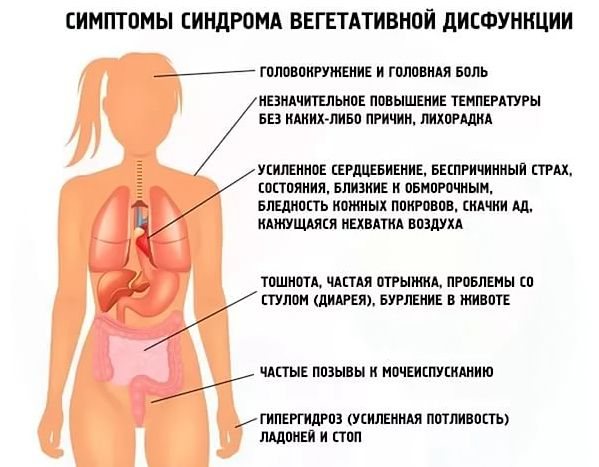
Signs of VSD.
Now, finally, about how hyperhidrosis and VSD are interconnected. The following conditions are considered to be the causes of dystonia:
- neuroses and emotional stress;
- pregnancy, childbirth, breastfeeding;
- bad habits (alcohol consumption and smoking);
- physical overload;
- chronic pathologies, including infectious ones;
- endocrine disorders.
This inevitably affects the functioning of the heart and other organs, and also causes excessive sweating.
In addition, excessive sweating during VSD is also due to its symptoms:
- rapid breathing;
- increased heart rate;
- dizziness and loss of spatial orientation;
- sleep disturbance;
- increased anxiety, turning into panic fear;
- a decrease in general tone, which causes a feeling of weakness and malaise,
- increased fatigue;
- frequent migraines.
Constant body moisture creates many inconveniences, and in itself is stress, which contributes to profuse sweating. Thus, a vicious circle arises.
Personal hygiene
Hyperhidrosis with vegetative vascular distance must be eliminated without forgetting about hygiene. Be sure to shower twice a day. Firstly, it is a good remedy against odor, and secondly, it will help you relax, which will be useful when choosing treatment for all types of pain. Clothes should always be clean and selected according to temperature (so as not to overheat the body).
Antiperspirant is a really powerful remedy for sweat odor in dystonia. You should also remember about it if you have such an ailment as hyperhidrosis.
Among other ways to eliminate the disease, methods are used to treat blood vessels and the cardiovascular system. To do this, it is necessary to perform physical activity in combination. Walking in the fresh air, especially before bed, is also beneficial.
Vegetative-vascular dystonia is the cause of many unpleasant manifestations that affect the patient’s well-being and vital functions. In most international reference books, this disease is often referred not to a separate disease, but rather to symptomatic manifestations indicating related pathologies. In domestic practice, it is customary to classify VSD as a separate disease, which has its own clinical picture and symptoms.
- Content:
- Why do people sweat a lot with VSD?
- How to reduce sweating during VSD
A patient suffering from this pathology has to cope with various unpleasant manifestations. For example, vegetative-vascular dystonia and sweating occur in 80% of cases. What can help a patient suffering from excessive sweating?
Types of hyperhidrosis

Excessive sweating is classified into:
- Local (limited).
- Generalized.
If in the first case, hyperhidrosis affects individual parts of the body, when, for example, the palms or only the face sweat, then the second type is total in nature - the torso, limbs and head become completely wet. Excessive sweating of the hands, feet and armpits with VSD can be:
- Primary, when it is caused by physiological reasons, for example, changes in hormonal levels during puberty.
- Secondary. In this case, excessive sweating is a consequence of health problems.
Hyperhidrosis with VSD indicates a severe course of the pathology and the need for urgent treatment. Increased body humidity in such cases manifests itself in a generalized manner and leads to constant discomfort.
Many people do not see the symptoms of dystonia as manifestations of the disease, so they do not rush to see a doctor. They try to restore health using their own methods and eliminate sweating with deodorants. This leads to the development of pathology, and hyperhidrosis becomes a constant companion.
Medical consultation and diagnostic measures

If you often break into a sweat during VSD, you should consult a therapist, but you may need to consult other specialists:
- Cardiologist.
- Neurologist.
- Oculist.
- Endocrinologist.
- Gynecologist.
- ENT.
- Infectious disease specialist.
Before prescribing treatment, the specialist will prescribe an examination of the body, which will help exclude the presence of other diseases and establish an accurate diagnosis:
- General blood analysis.
- General urine test.
- Dopplerography.
- MRI.
- Ultrasound of the heart and blood vessels.
- Electrocardiogram.
Based on the results obtained, the doctor selects the necessary treatment regimen for daytime and nighttime sweating. In this case, therapy is primarily aimed at eliminating VSD, as the root cause of hyperhidrosis.
Night sweats
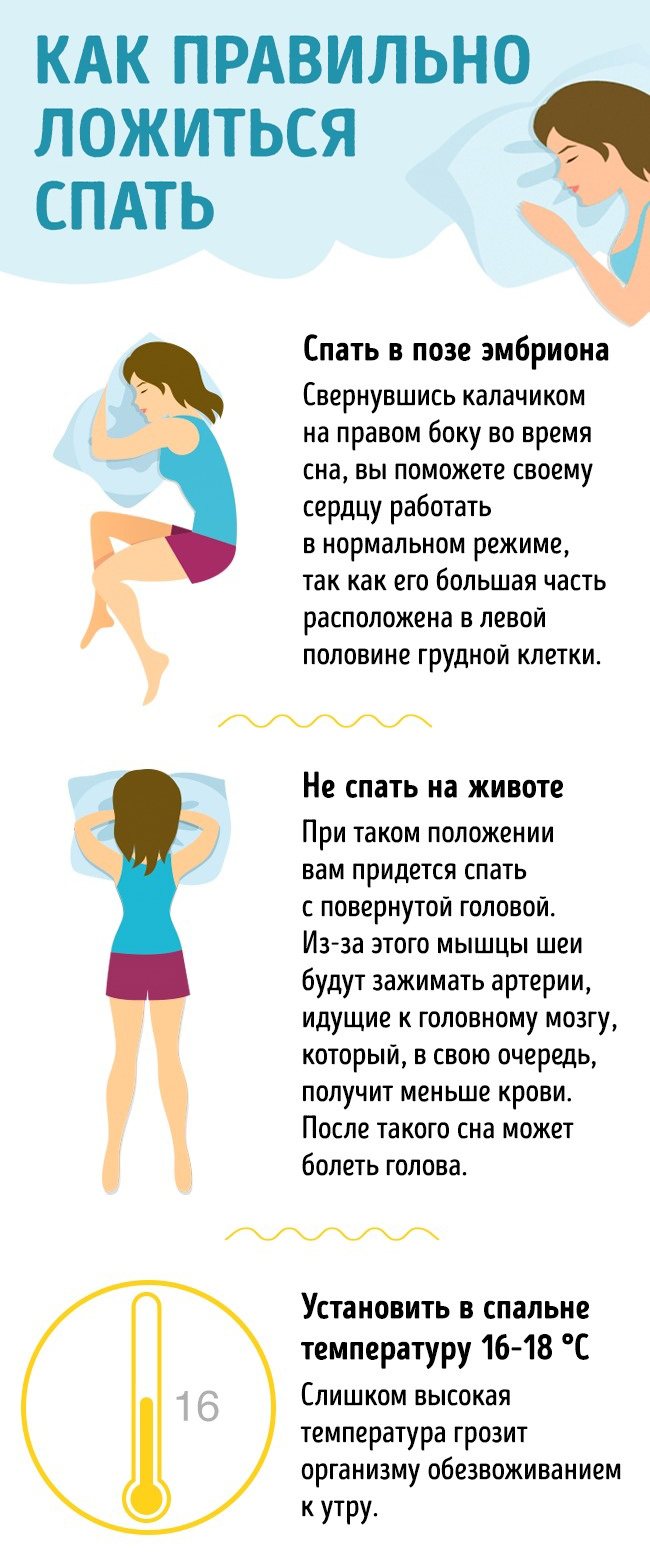
Proper sleep conditions to prevent night sweats and more.
It is a signal of trouble in the body. Regular and severe sweating at night is a reason to consult a doctor, even if you seem to be feeling fine. Symptoms of VSD can develop gradually, and at first they practically do not appear.
Profuse night sweats can be perceived as a natural reaction of the body when, for example, a person takes antiviral and antibacterial drugs, as well as antipyretics.
Regular release of large amounts of sweat at night, which cannot be explained, must be regarded as a sign of the development of generalized hyperhidrosis.
With VSD, it is secondary in nature and can indicate that the person:
- is sick with tuberculosis or cancer pathologies;
- suffers from dysfunction of endocrine organs and/or other health disorders.
We recommend that you read
Causes of severe sweating after eating; Underarm pads to protect clothing from sweat;
Our rating of the best antiperspirants that reliably protect against sweating.
Features of symptom manifestation
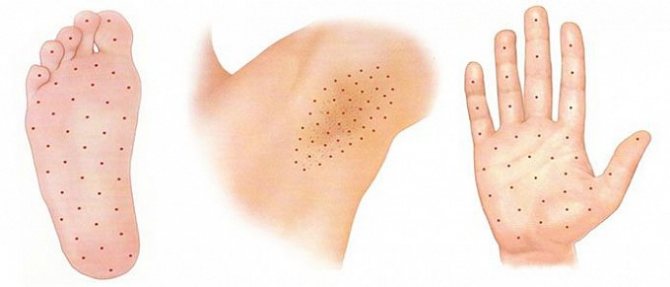
Sweating during VSD can manifest itself in different ways, depending on the type of disease. However, in most dystonics, an unpleasant symptom is most often observed in the following areas of the body:
- Palms.
- Feet.
- Armpits.
A person can sweat profusely both during the day and during sleep at night, but at night he can break into a sweat for absolutely harmless reasons:
- Increased room temperature.
- Warm or synthetic pajamas or nightgown.
- The bed linen is made from low-quality material.
However, there are also not entirely harmless reasons:
- The presence of an infectious disease.
- Tuberculosis.
- Rheumatism.
- Hormonal disorders.
- Malignant tumor.
- Hypoglycemia
- Genetic disorders.
- Obesity.
- Bad ecology.
- Taking certain medications.
- Endocrine disorders.
- Significant weakening of the body.
Systematic heavy night sweating is usually generalized and is a clear sign of a severe neurological disorder that requires extensive drug therapy.
VSD, and therefore hyperhidrosis, affects people of all ages. The disease begins to develop in childhood or adolescence. However, the pronounced nature of the symptoms of the disease and sweating is observed in a person aged 20-30 years.
The disease is diagnosed in women 3 times more often than in men.
Methods to reduce excessive sweating

Before treating hyperhidrosis, it is important to find out the origins of the phenomenon. When it is one of the symptoms of ill health, treatment should be based on eliminating the root cause. Otherwise, it is impossible to get rid of hyperhidrosis. The use of external agents will give a short-term effect, and the condition will worsen.
In other words, when excessive sweating is one of the signs of VSD, it is important to find out the nature of the dystonia itself and begin treatment. Correct therapy is possible only under the supervision of a doctor. He will conduct an examination, make a diagnosis and prescribe a set of medical measures.
Normalization of lifestyle
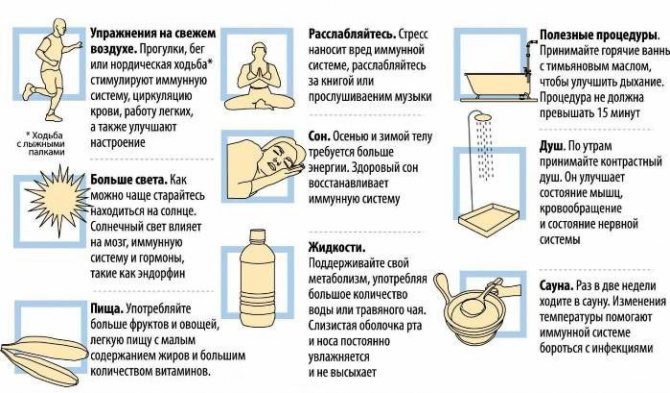
To prevent sweating due to stress, just follow simple rules.
The correct order of life plays an important role in eliminating the symptoms of VSD, including hyperhidrosis:
- maintaining a daily routine where sufficient time is allocated for rest;
- developing resistance to emotional stress and learning skills that will help cope with their impact;
- feasible physical activity;
- regular and nutritious meals.
To reduce the amount of sweat secretion, it is important not only to consume healthy foods with sufficient vitamins and minerals. It is recommended to minimize canned, salted and smoked foods. You should not overuse meat, especially fatty varieties.
Drug treatment
Complex therapy for VSD includes taking medications that relieve symptoms, including hyperhidrosis. For this purpose, the following may be prescribed:

The most famous sedatives.
psychotropic drugs;
- medications that eliminate anxiety and also help overcome depression;
- tablets and mixtures with a sedative effect, without a hypnotic effect;
- neurometabolic brain stimulants.
From the first days of their use, results will become noticeable, and excess sweating will go away.
Psychotherapy
Many doctors believe that the fight against hyperhidrosis, as a symptom of VSD, should begin with a visit to a psychotherapist. This is explained by the fact that one of the reasons for high body humidity is the excited state of the central nervous system.
Using an individual approach, the psychotherapist will tell you how best to overcome stress and cope with anxiety and prescribe appropriate medications. The patient will learn to “control himself”, stop being nervous, and therefore stop sweating a lot.
Massage
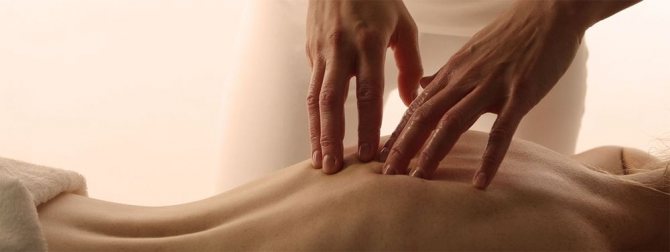
A course of massage therapy can be a simple but very effective solution in combating the symptoms of VSD. A month of manual procedures can significantly increase stress resistance, remove signs of dystonia, and normalize sweating.
Symptoms of vegetative vascular dystonia
To cure hyperhidrosis, doctors recommend eliminating the cause of its occurrence, one of which is a problem related to the vegetative-vascular system. This problem, in turn, has a number of main symptoms:
- increased sweating;
- slow or rapid heartbeat;
- breathing problems;
- causeless increase in heart rate;
- insomnia;
- dizziness;
- feeling of a “lump” in the throat;
- sense of anxiety;
- fast fatiguability;
- frequent pressure surges;
- poor concentration;
- headache.
And these are only the main symptoms of vegetative-vascular dystonia. However, VSD can be regarded as disorders of the following nature:
- vascular;
- cardiological;
- neurological;
- psychological.
The cause of vegetative-vascular disease can also be hormonal changes in the body, for example during or after pregnancy. It is precisely these disorders that are characteristic of people with hyperhidrosis (for example, it often occurs with neuroses). A disorder of the central nervous system is what causes excessive sweating.
Diagnosis of the disease
To prevent the development of the disease, you first need to consult a doctor to diagnose the disease.
To establish an accurate diagnosis, you need to undergo a full examination of the functioning of the cardiovascular system, cerebral vessels and other necessary systems and organs. The doctor needs to tell detailed information about the signs of the disease that the patient has been experiencing lately, such as headaches, night sweats, trembling legs or palms, lack of appetite and other sensations.
For VSD, consultation with an endocrinologist is needed, as well as readings from an electrocardiogram, computed tomography (layer-by-layer X-rays) and Dopplerography (ultrasound).
A symptom of vegetative-vascular dystonia can be either local sweating, for example, excessive sweating of the palms, or generalized hyperhidrosis, in which sweating occurs throughout the body, while emitting an unpleasant odor.
ethnoscience
Traditional medicine for VSD can also help cope with ailments. Here are some examples:
- Honey - you can eat it as you like, but it’s better in the morning on an empty stomach, about 100-120 grams. Honey is rich in various medicinal properties; it will increase hemoglobin and help with sweating of the palms. You can add a tablespoon of honey to a glass of water and drink it at night. The main thing is not to pour boiling water over honey, otherwise the healing properties of such a drink will disappear.
- Schisandra. Take its decoction (15 grams per glass of water) 3 times a day, 1-2 tablespoons.
- A mixture of oregano and oak bark also gives good results. To do this, prepare an infusion of 40 grams of plants, taken in equal parts. Pour boiling water (1 cup) over the mixture and leave to brew for an hour. Take a tablespoon before meals.
Many folk recipes help cope with the disease no worse than expensive drugs from the pharmacy, and at the same time they are much cheaper. But do not forget to consult your doctor about alternative medicine.
Successful treatment depends not only on the drugs you are prescribed, but also on the efforts you make. Follow all the doctor’s recommendations, and sweating due to vegetative-vascular dystonia will go away.
Excessive sweating is a consequence of a certain malfunction in the body, causing a person to feel insecure and uncomfortable. Treatment depends on the cause of sweating, so it is prescribed for each patient individually.

